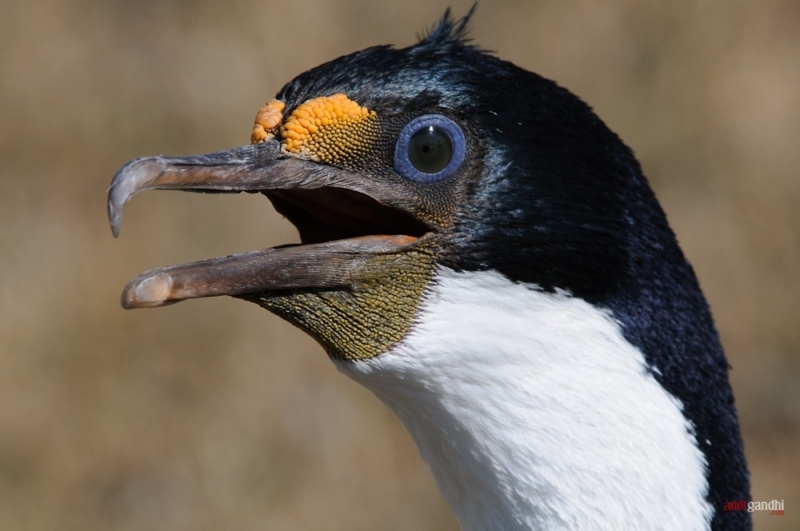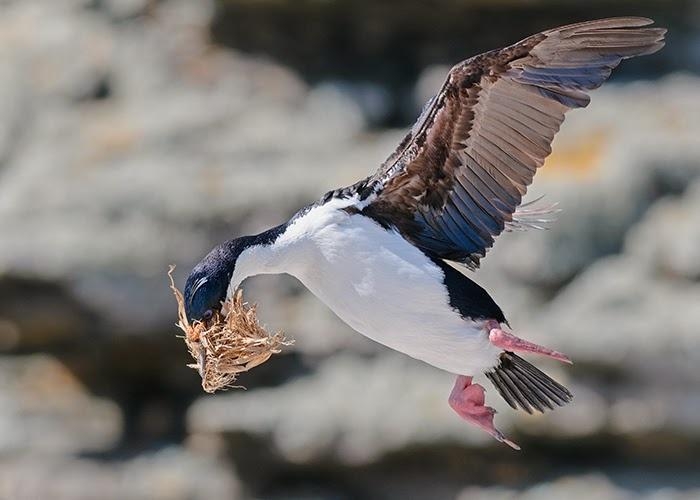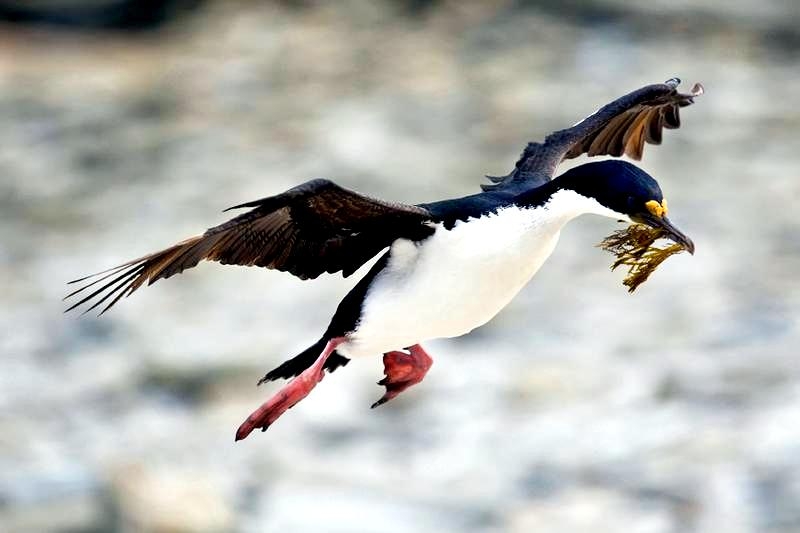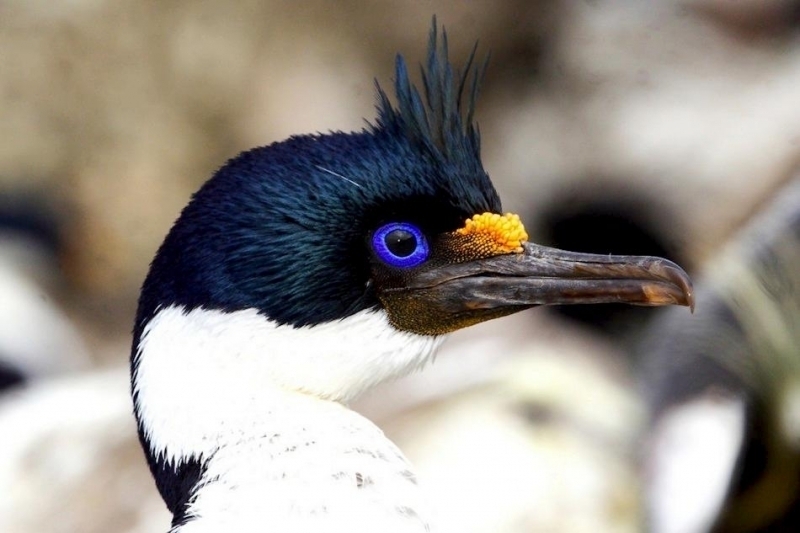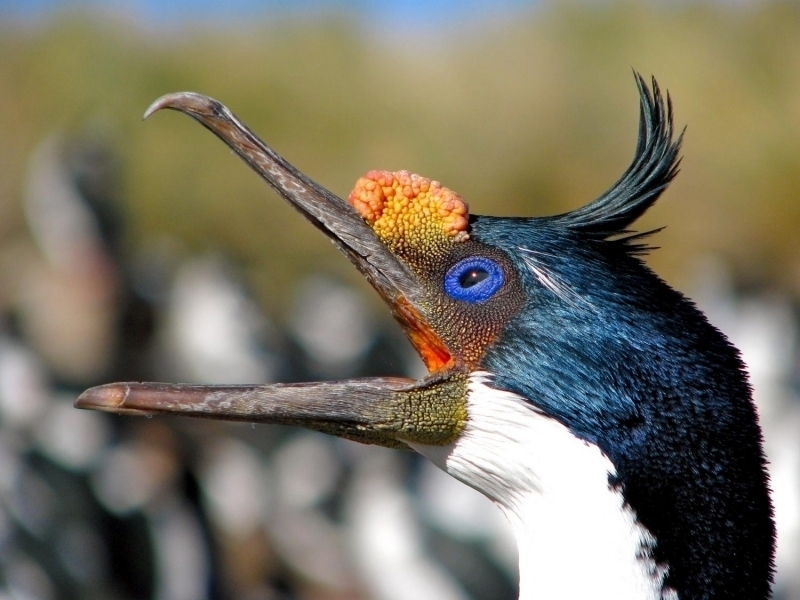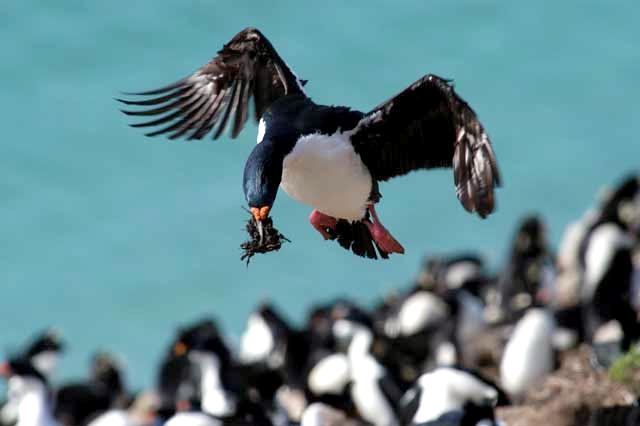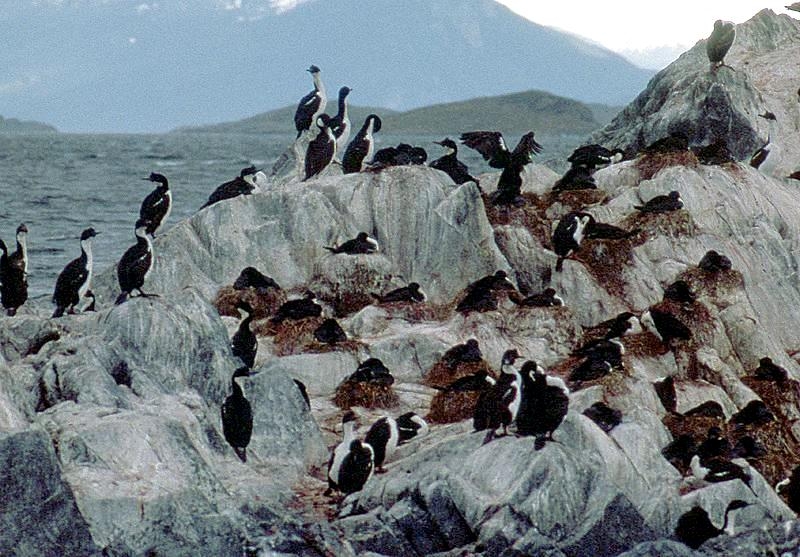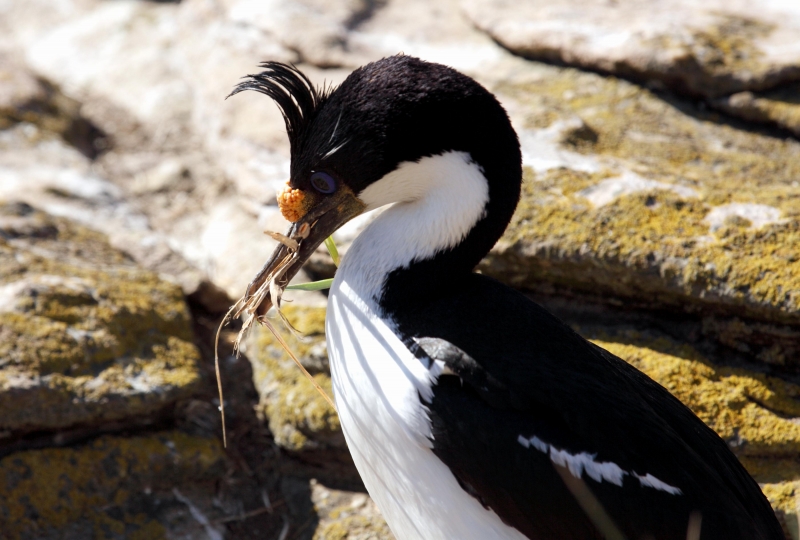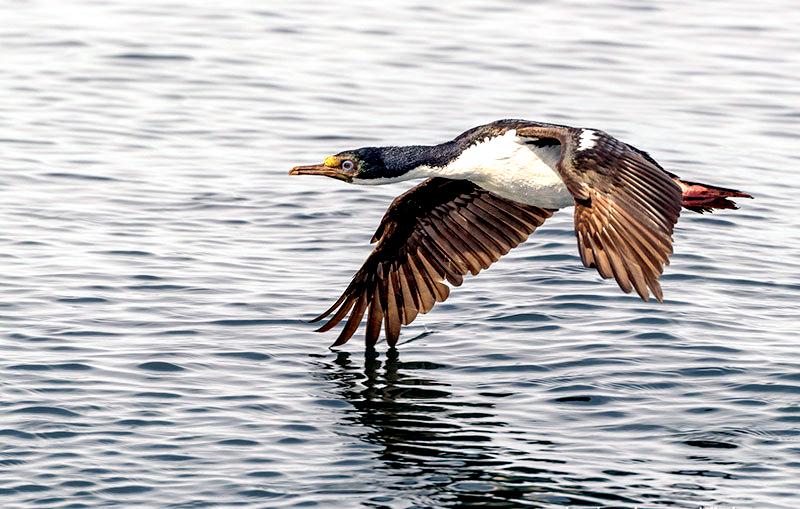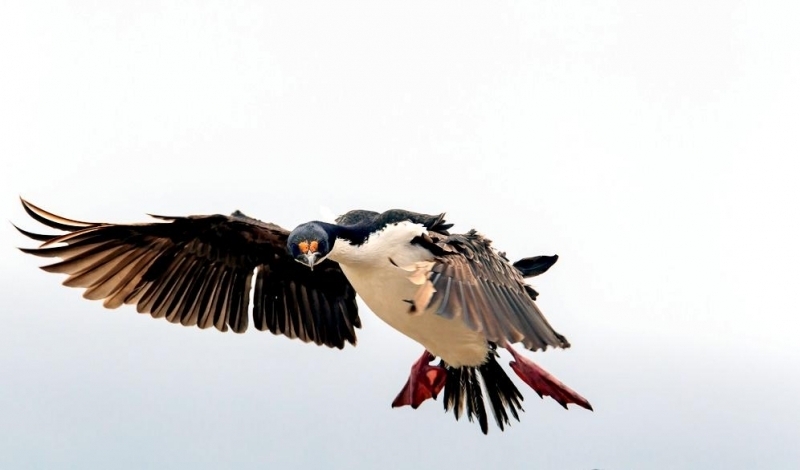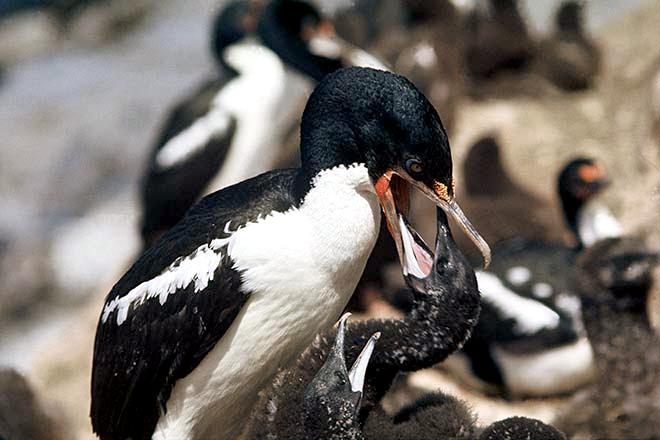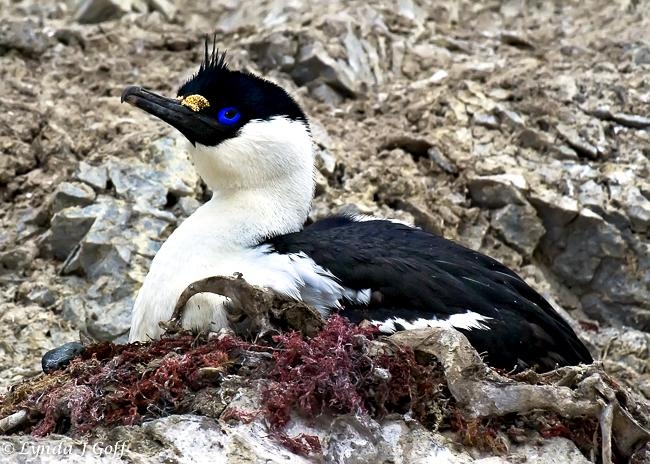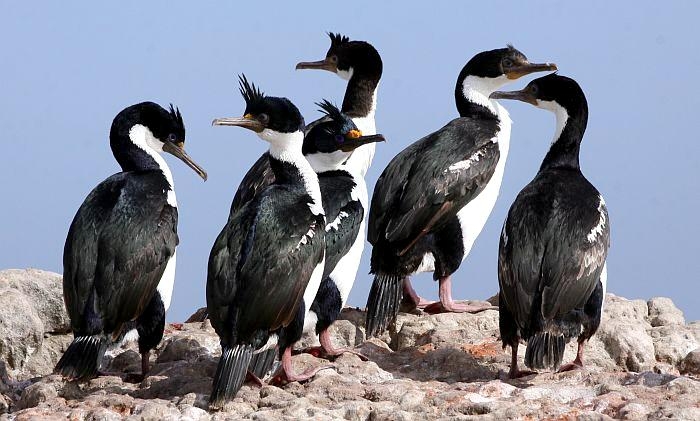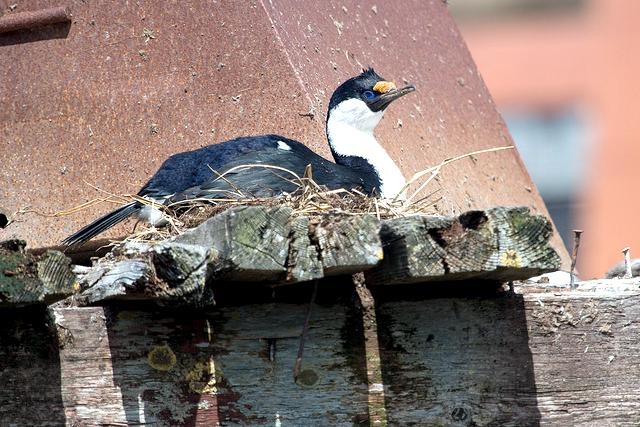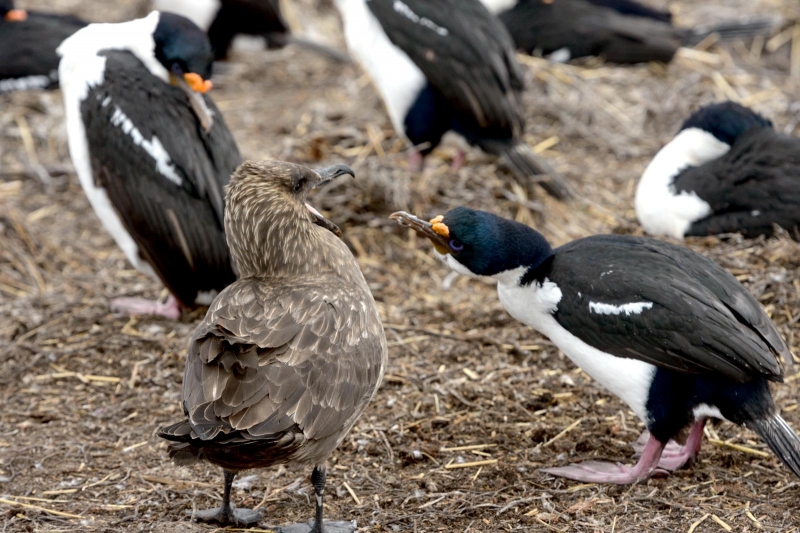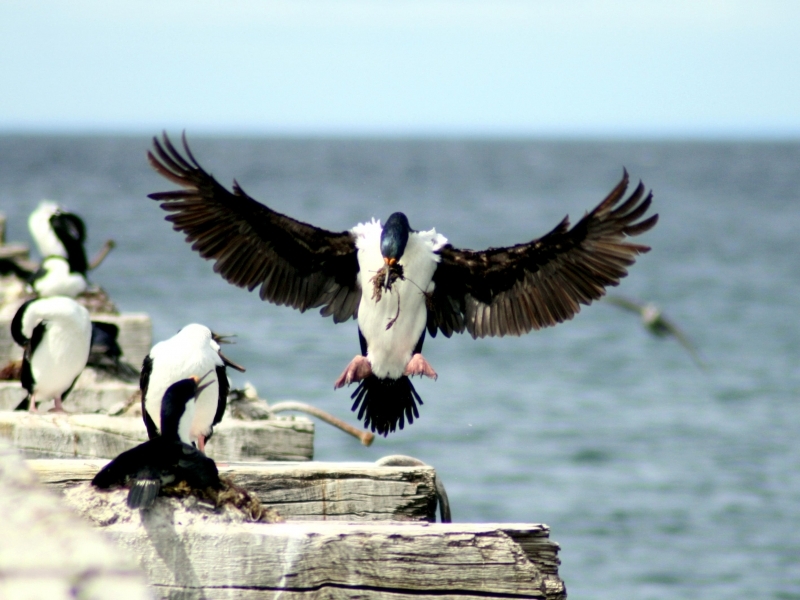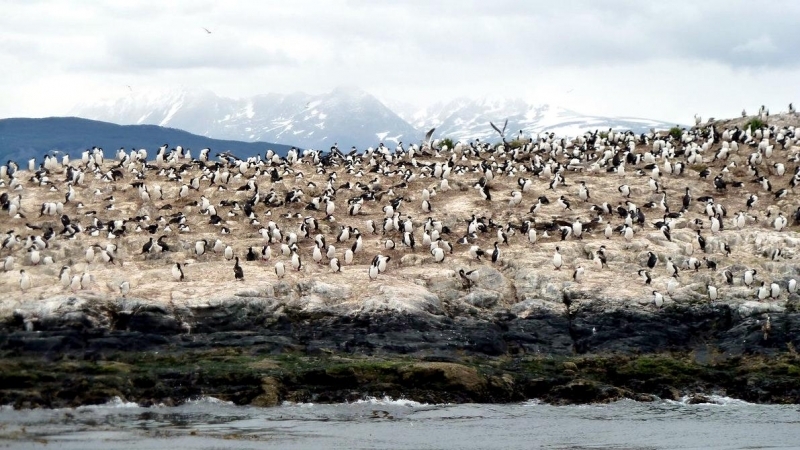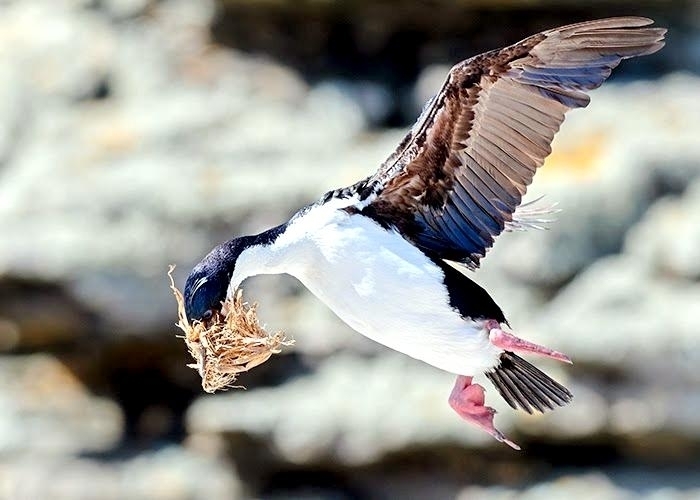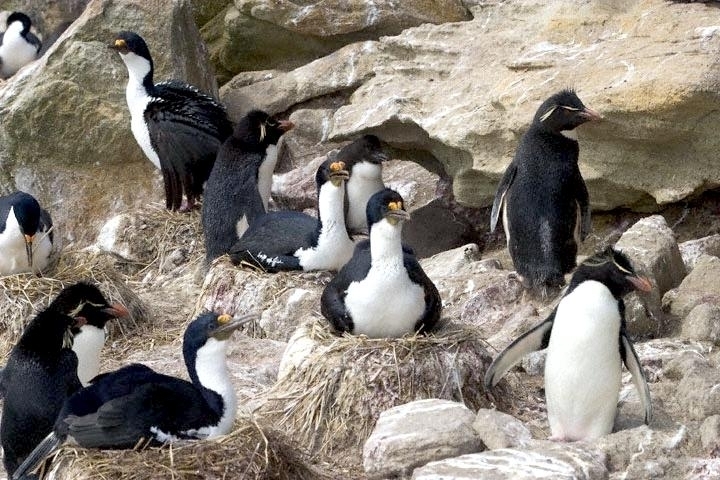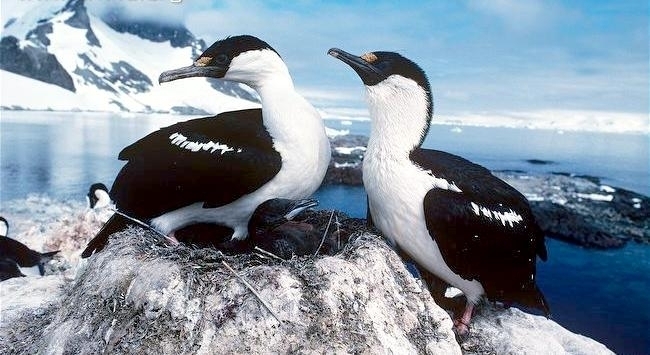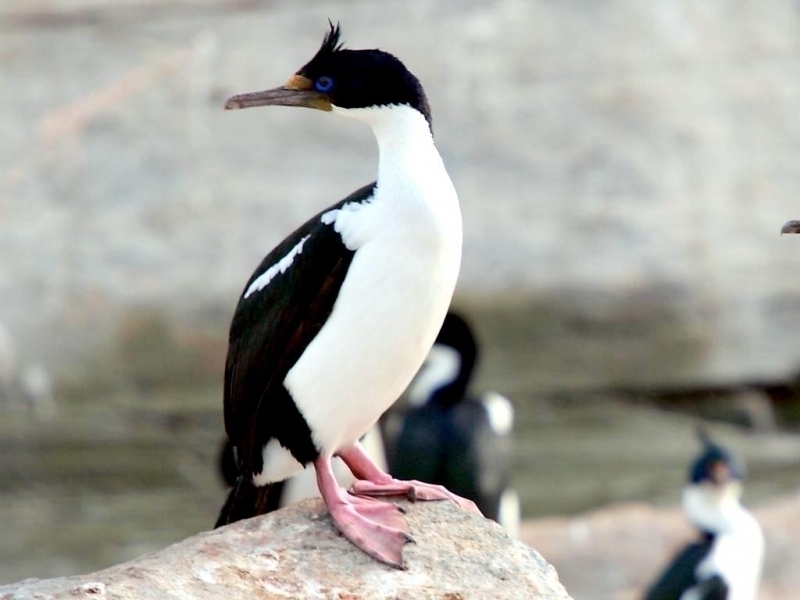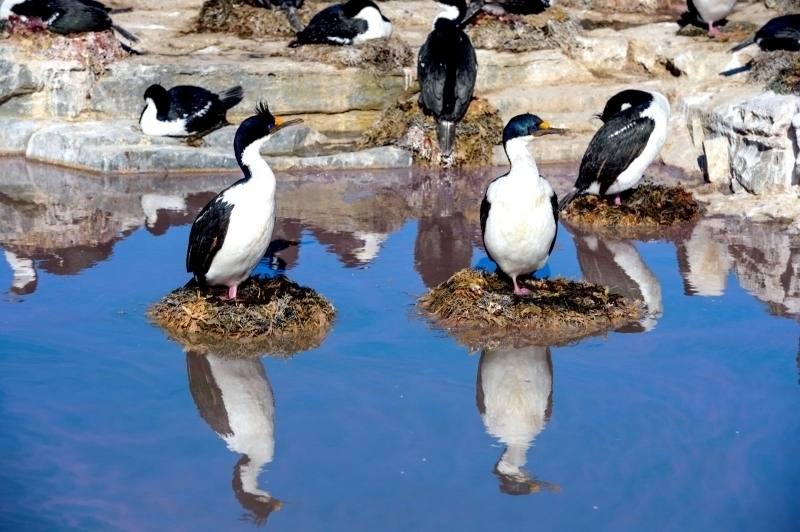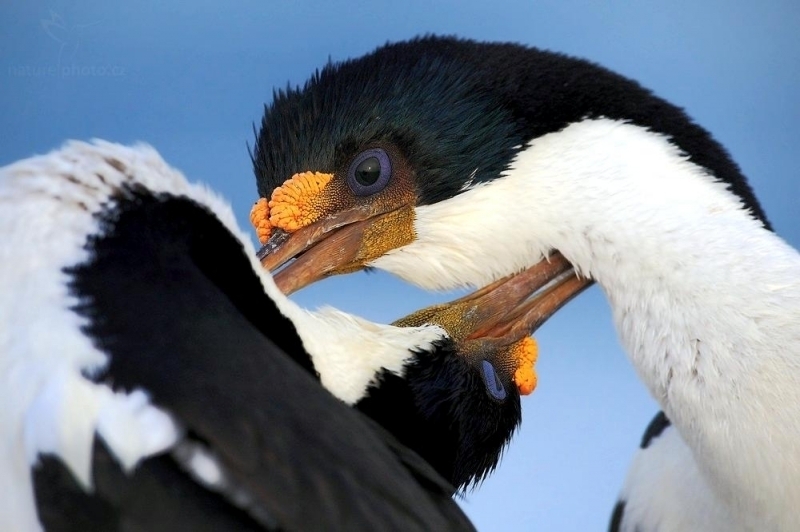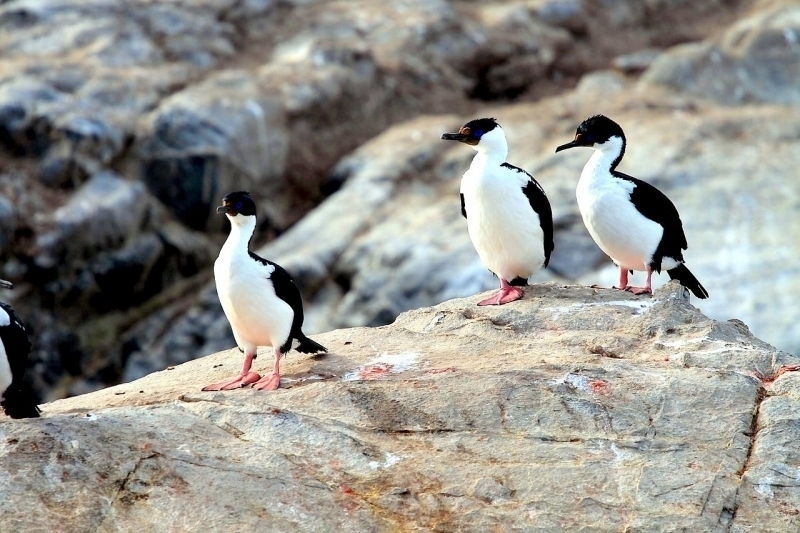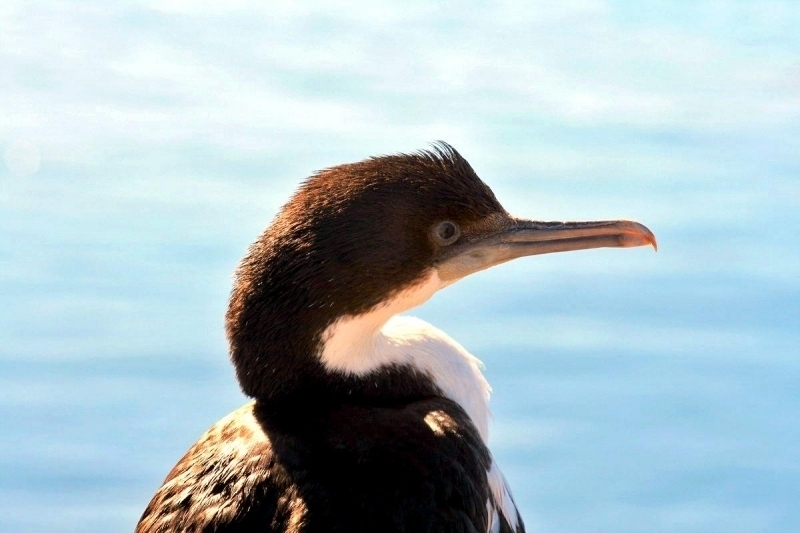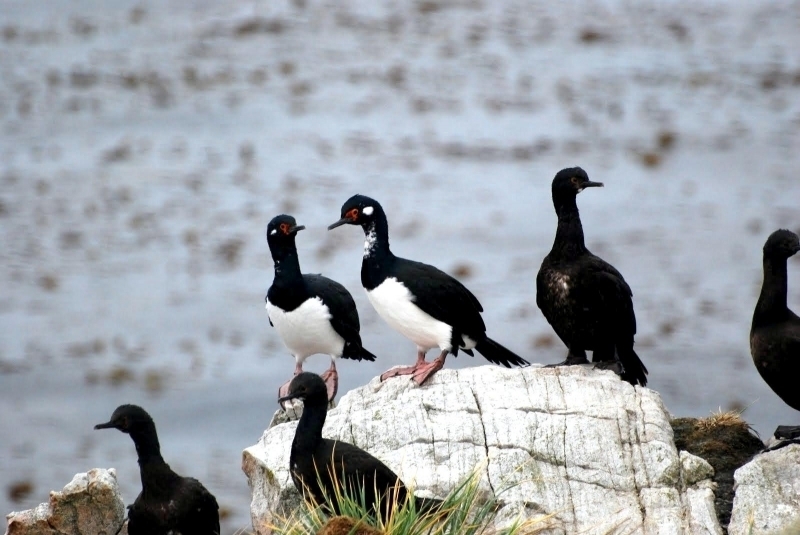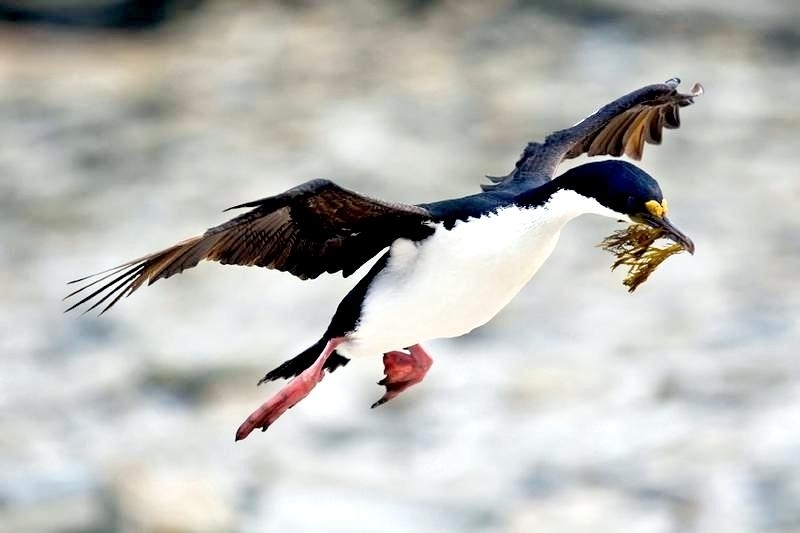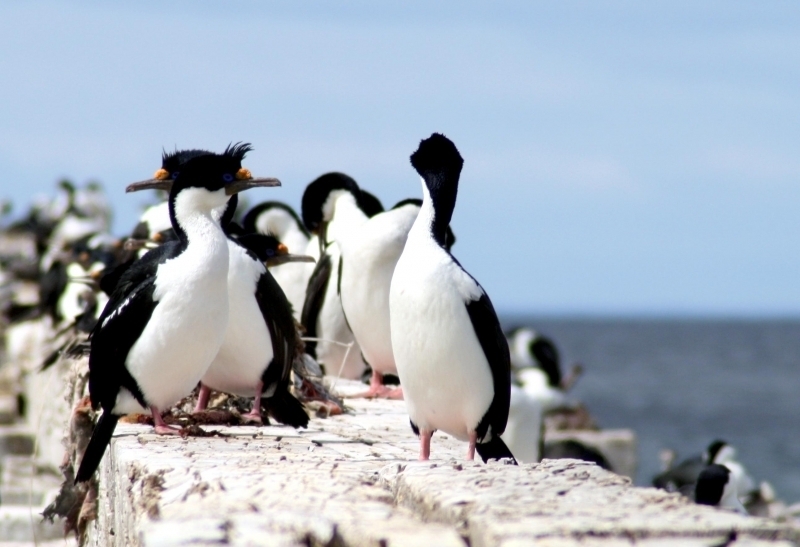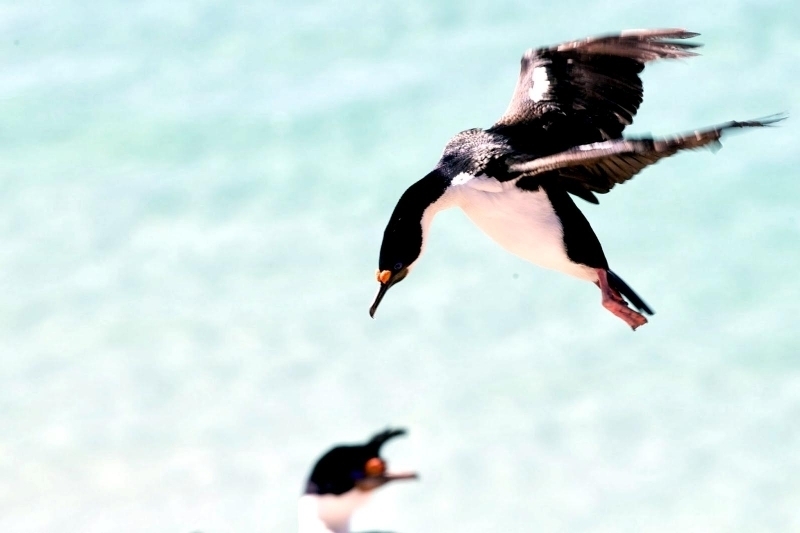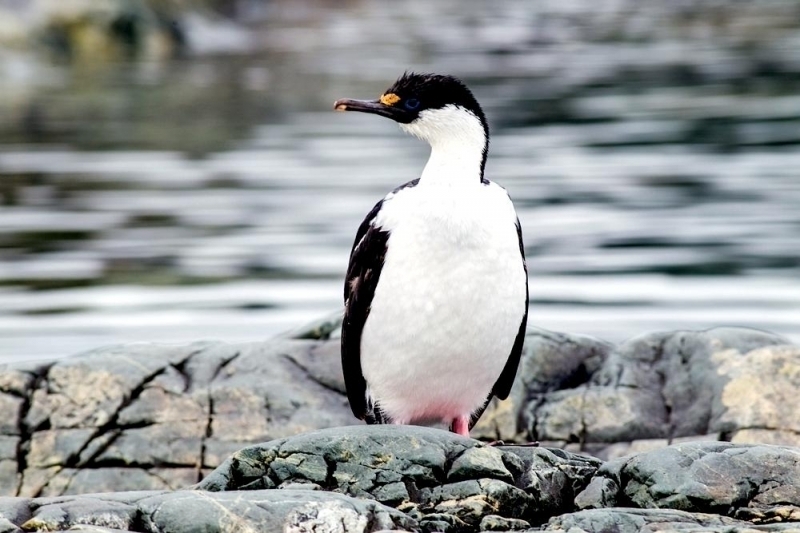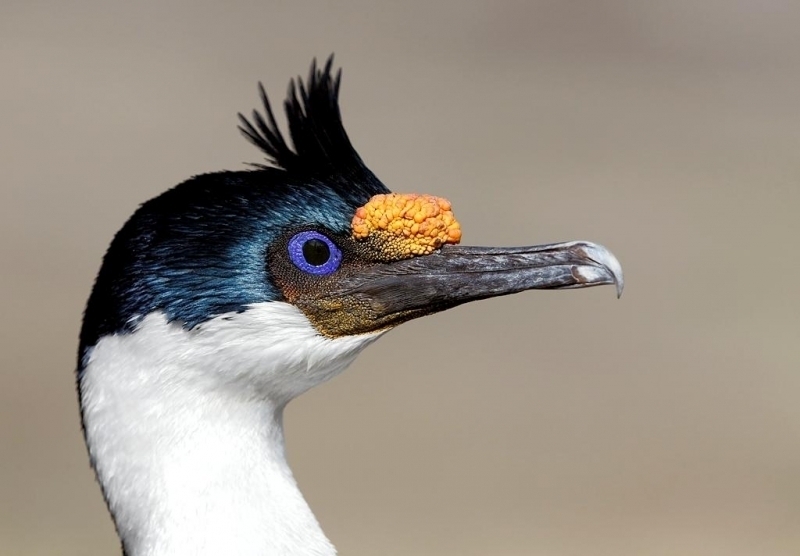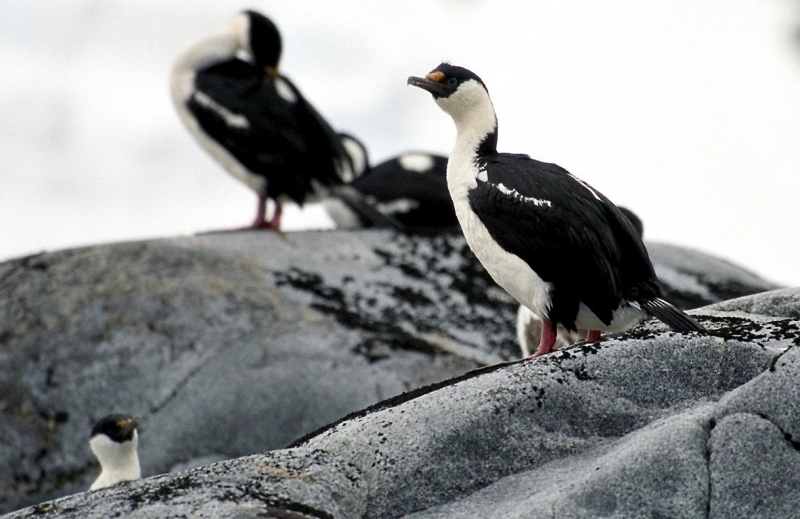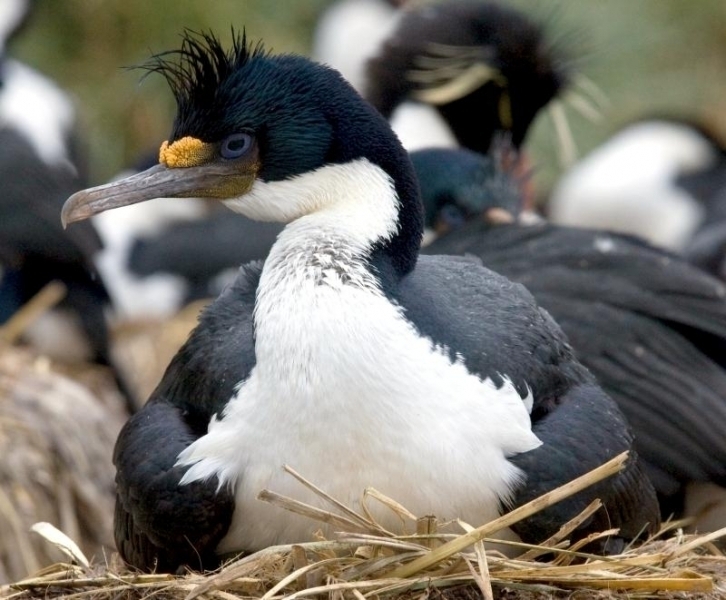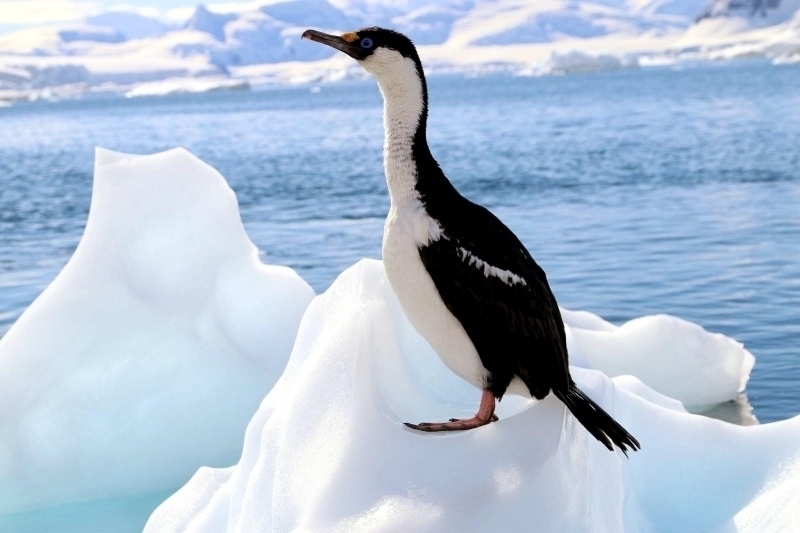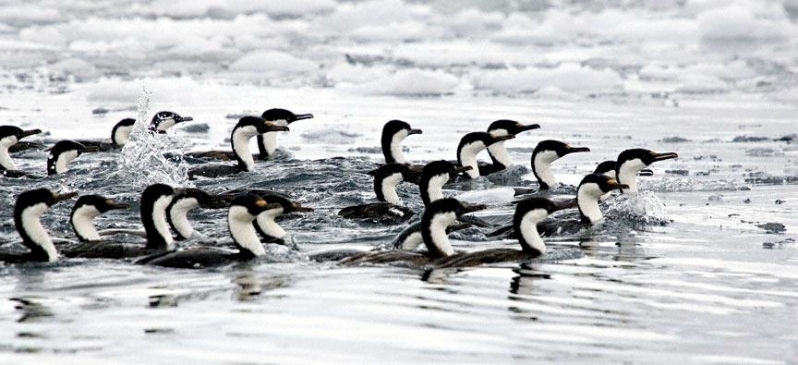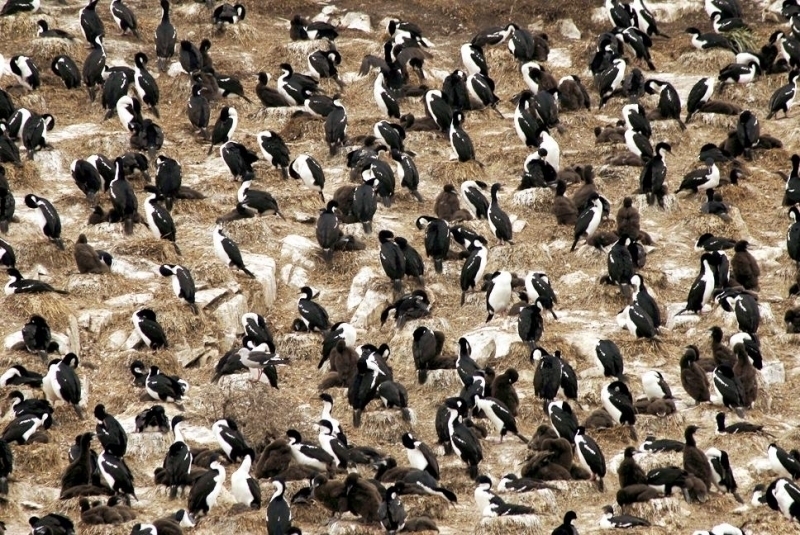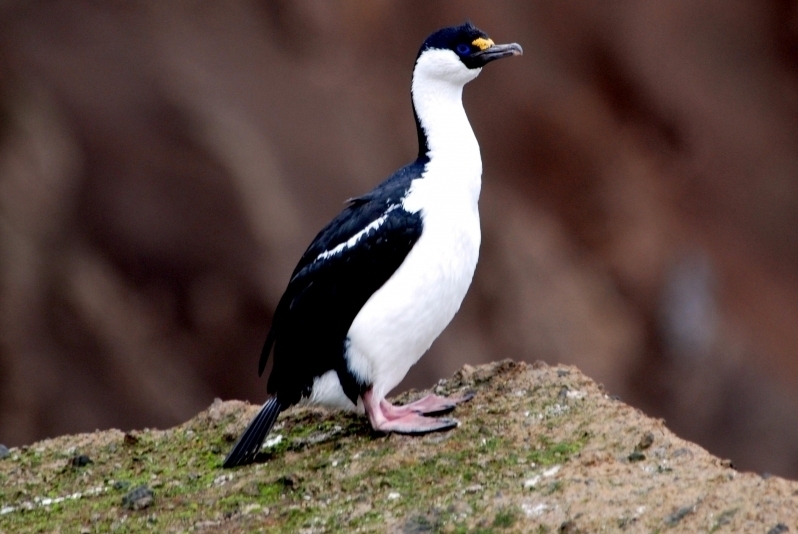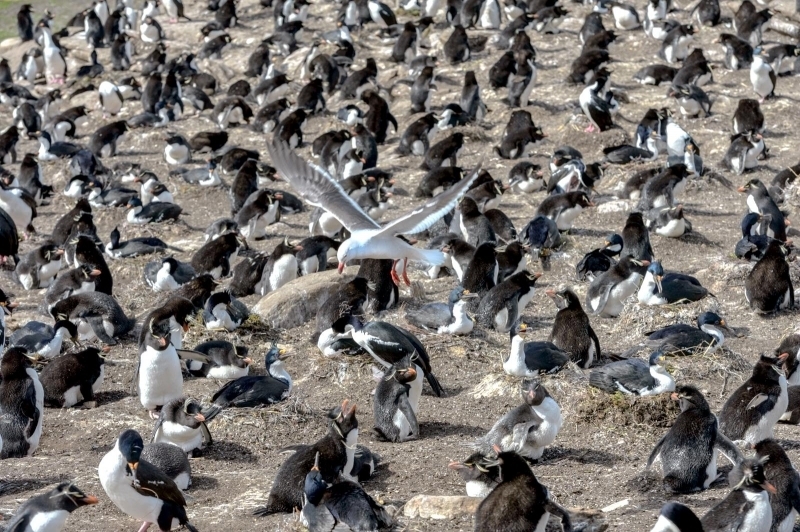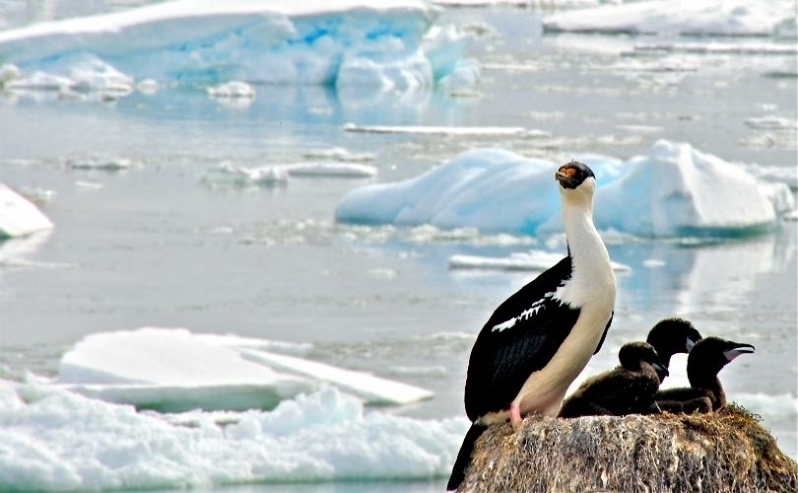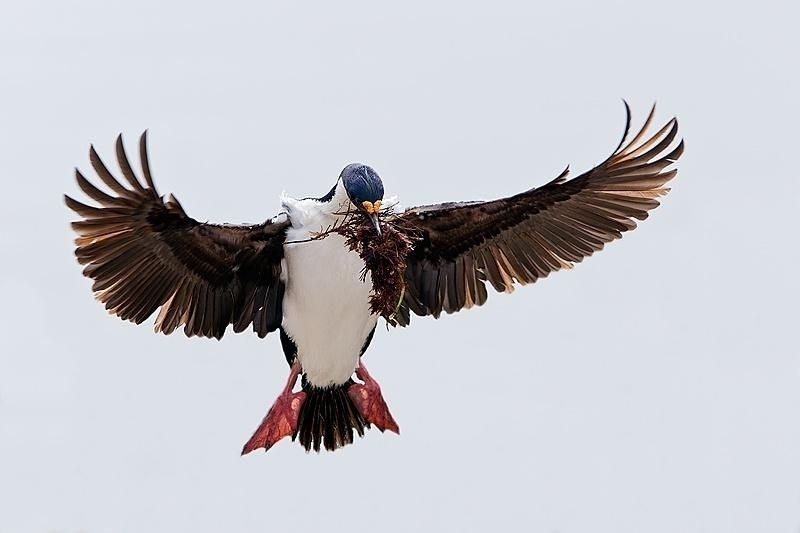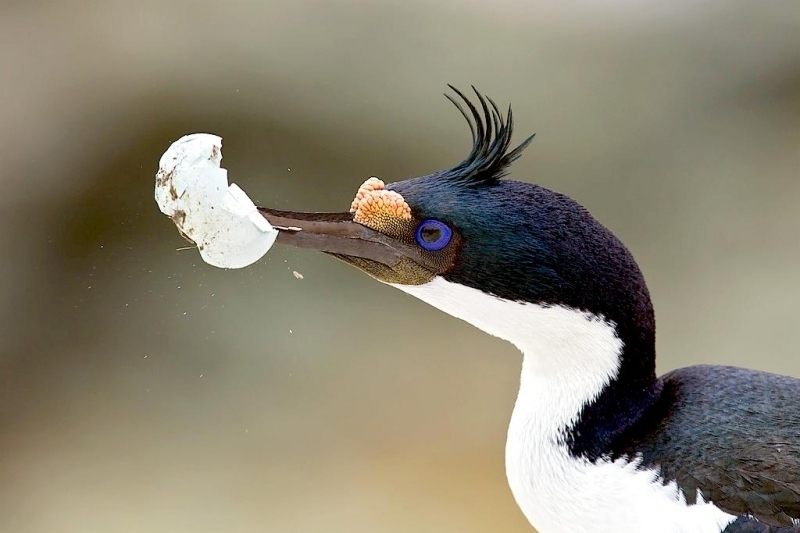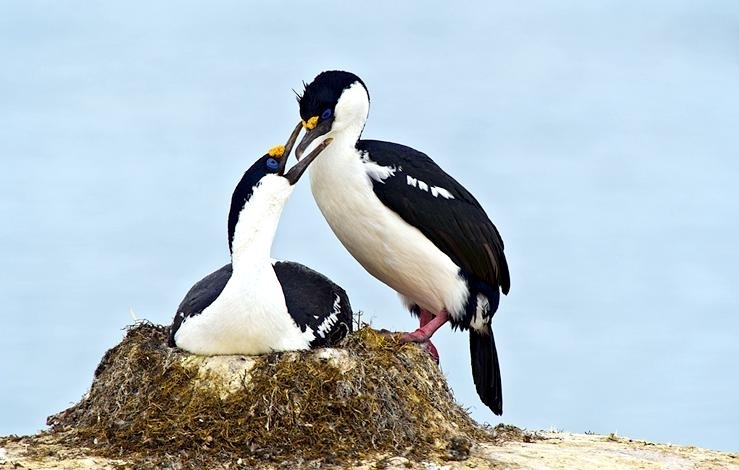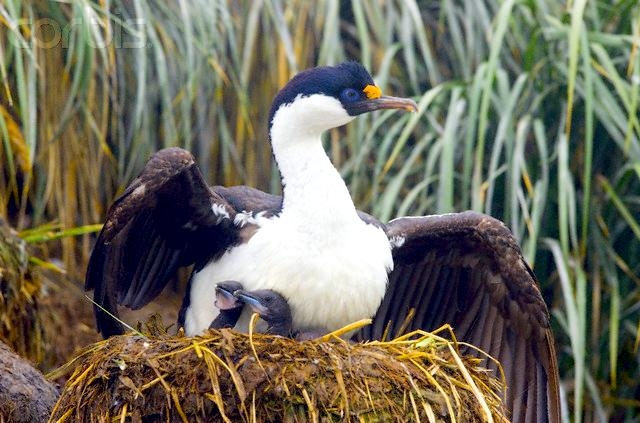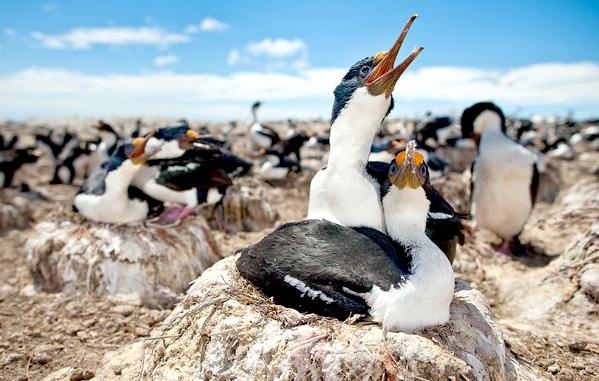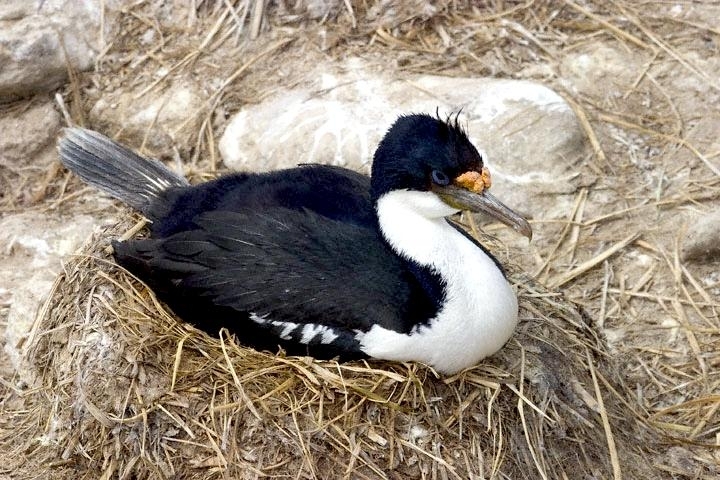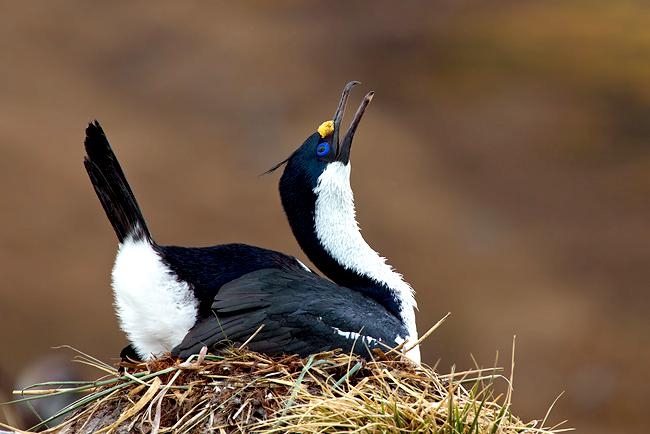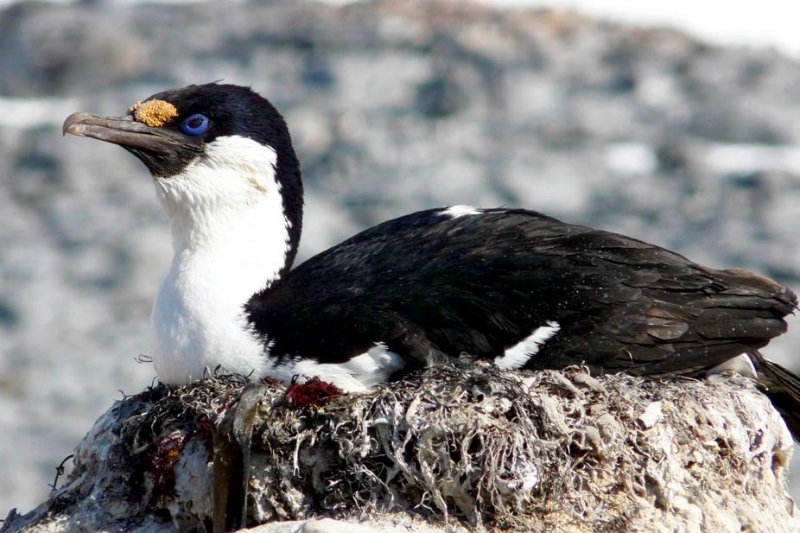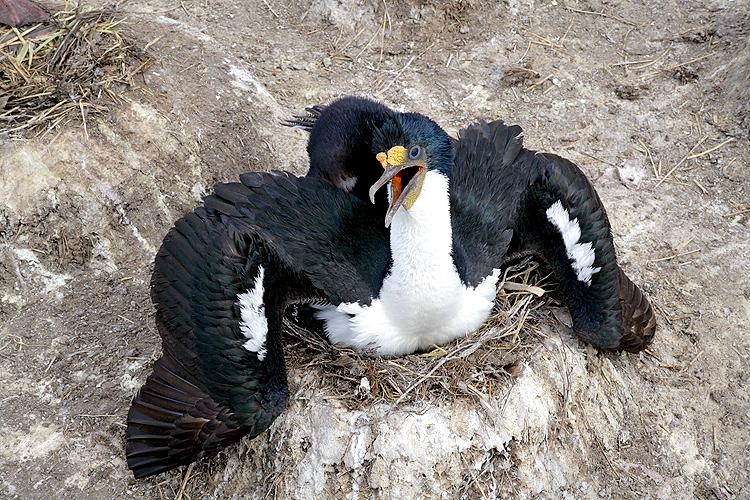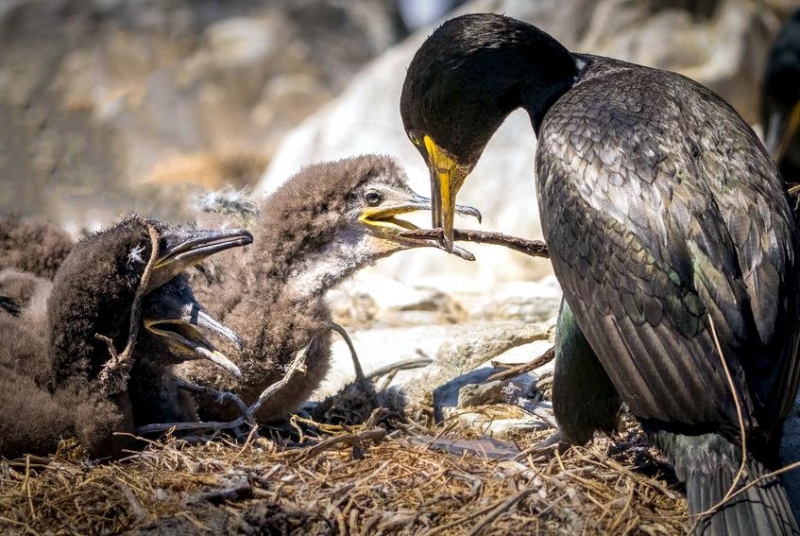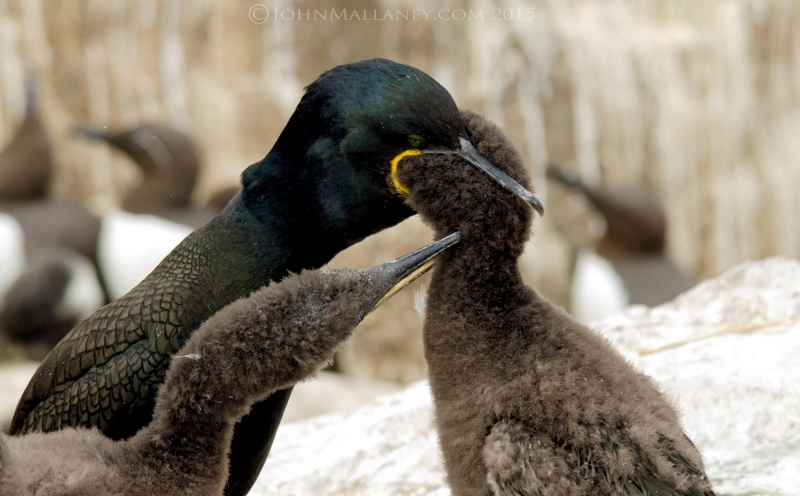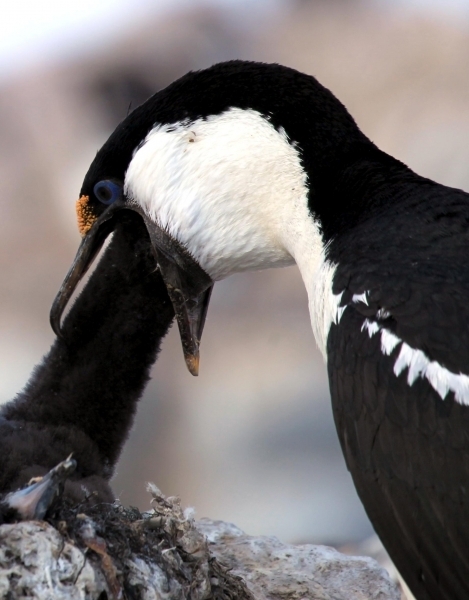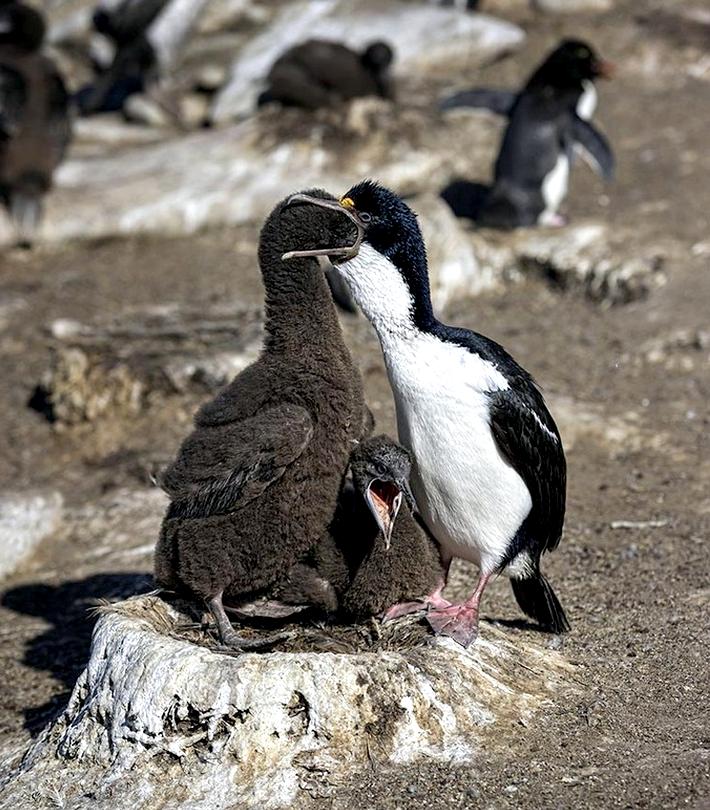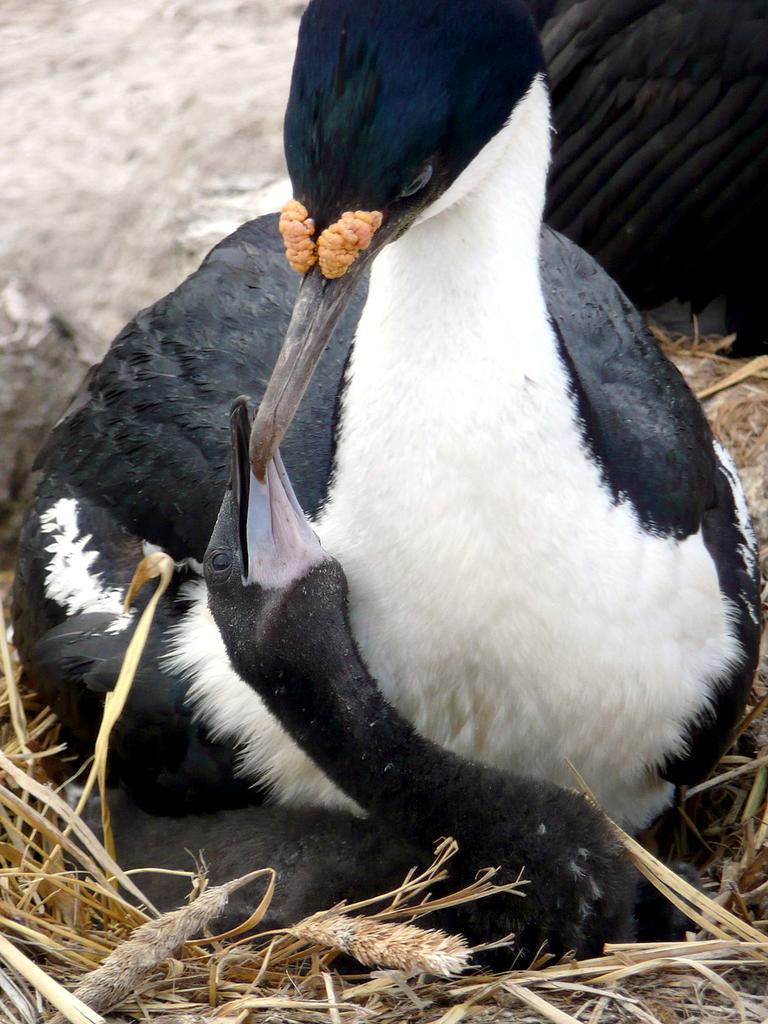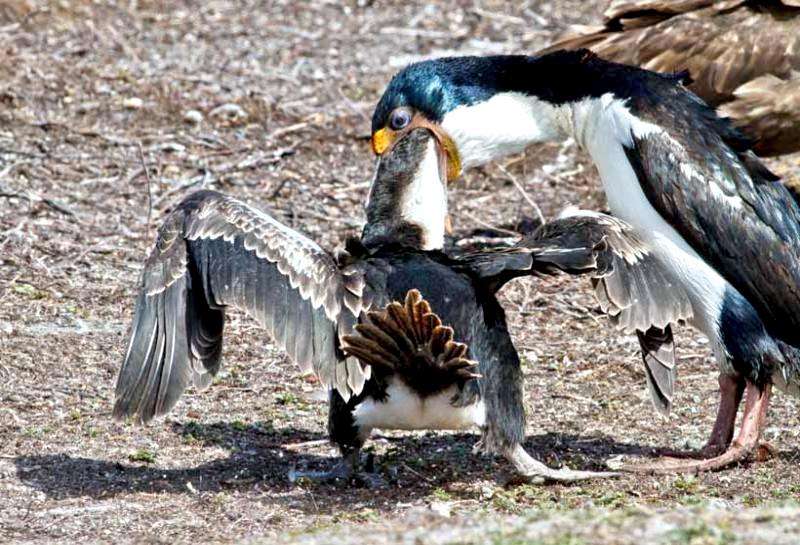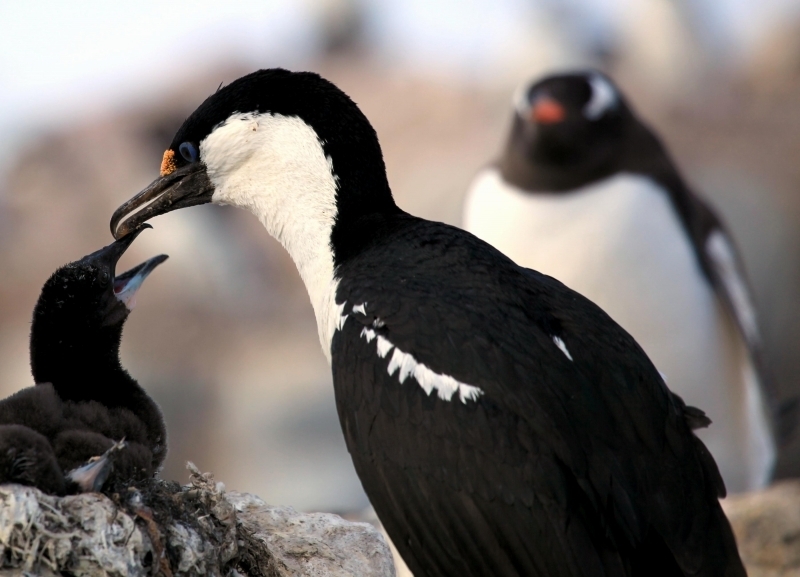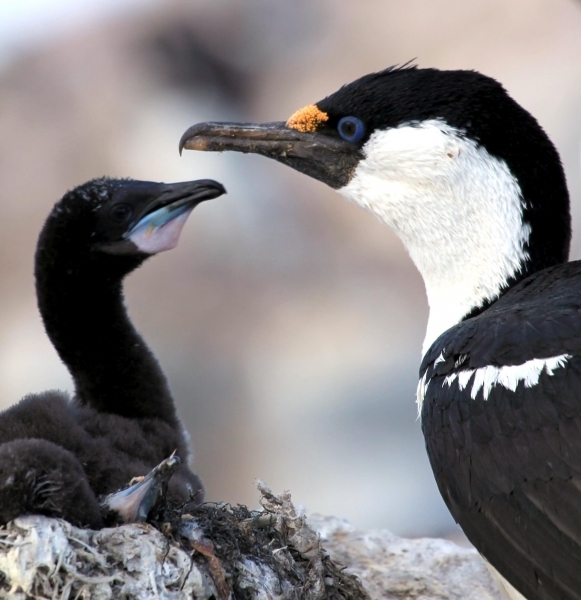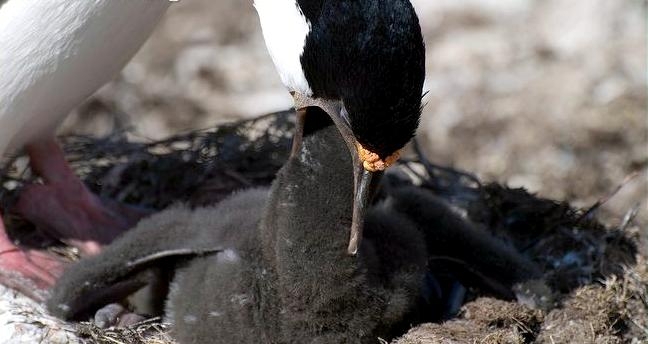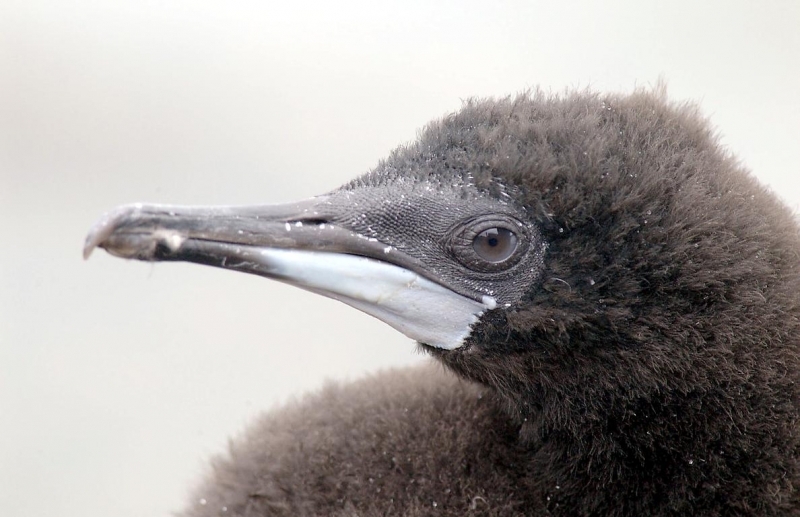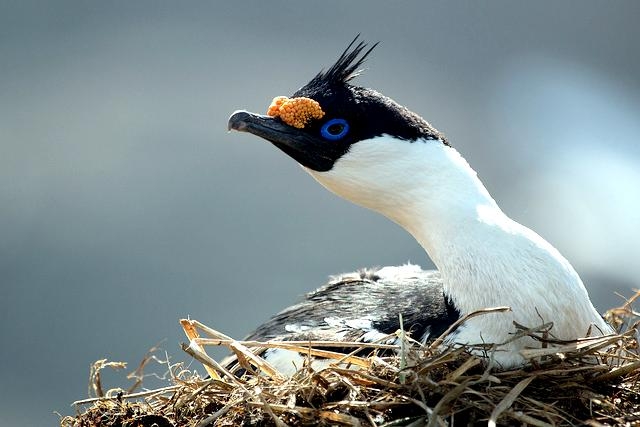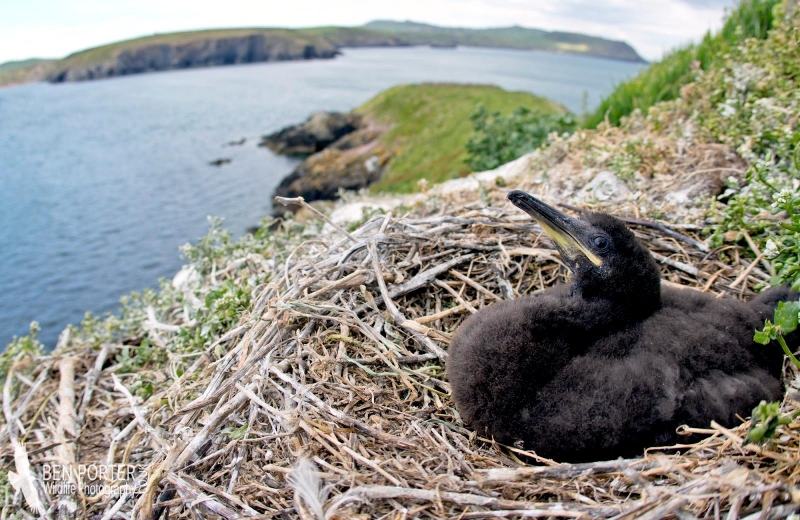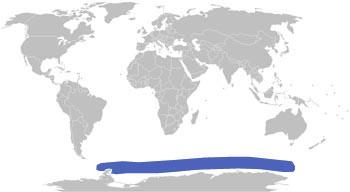“Leucocarbo atriceps”
The Imperial Shag is a black & white member of the cormorant family native to many sub-antarctic islands, the Antarctic Peninsula and southern South America primarily in rocky coastal regions, but locally also at large inland lakes. It can dive as deep as 80 feet while foraging for small benthic fish, crustaceans, polychaetes, gastropods & octopuses. The colonies are usually relatively small, but some consist of hundreds of pairs and are often shared with other seabirds. The Imperial Shag is basically sedentary, but numerous birds wander up coasts of Chile and Argentina to north of breeding areas. During the austral winter, they often move up Atlantic coast as far as Uruguay. The Falklands’ birds remain around the islands all year round. The flight is powerful with regular wing-beats sometimes interspersed with occasional glides. They may reach speeds of up to 80 km/hour.
The breeding season starts in October/November. The Imperial Shag forms colonies that can be very large, often shared with other seabirds & penguins. The nest is placed on flat top of rock or on islets in sea or on lakes. This is a truncated cone made with seaweed and various plant materials, cemented together with mud & excreta. The nest-site is often reused year after year. The female lays 2-4 eggs. Both adults take turns and share the incubation during about 28 days. At hatching, the chicks are naked & helpless. They grow quickly while they are fed on regurgitated fish by both parents. They fledge 75-80 days after hatching and are usually able to fly. The Imperial Shag has a total length of 28-31 inches and weighs 4-8 pounds with males averaging larger than females. It possesses a distinctive ring of blue skin around its eyes, an orange-yellow nasal knob, pinkish legs & feet and an erectile black crest. The Imperial Shag is endowed with glossy black feathers covering most of its body, with a white belly and neck. This species breeds commonly on both coasts of southern South America and on the Falkland Islands.
